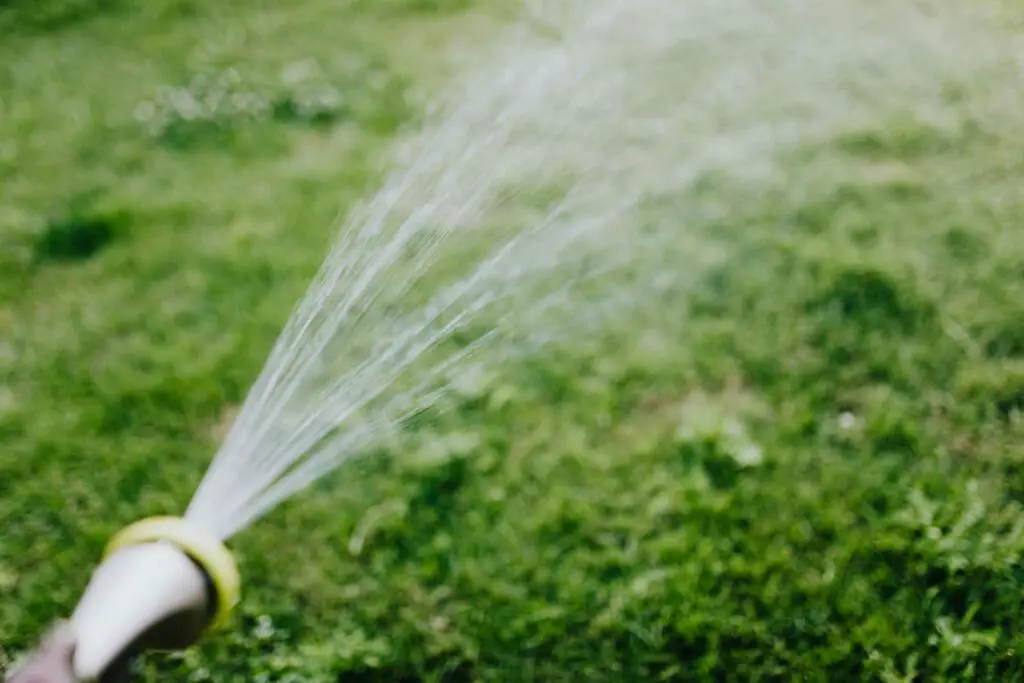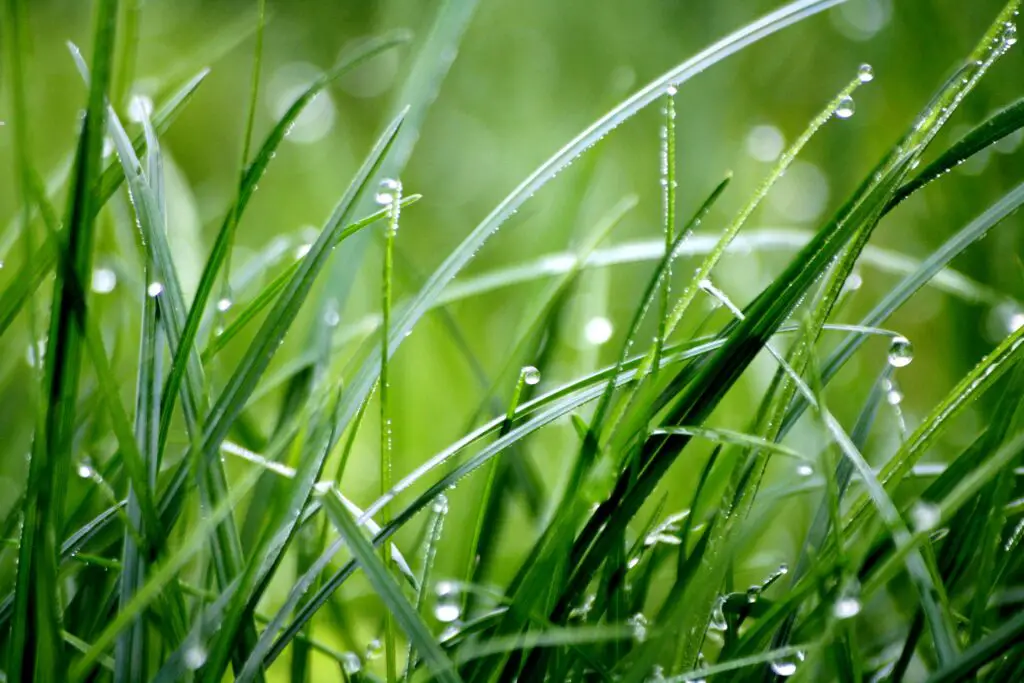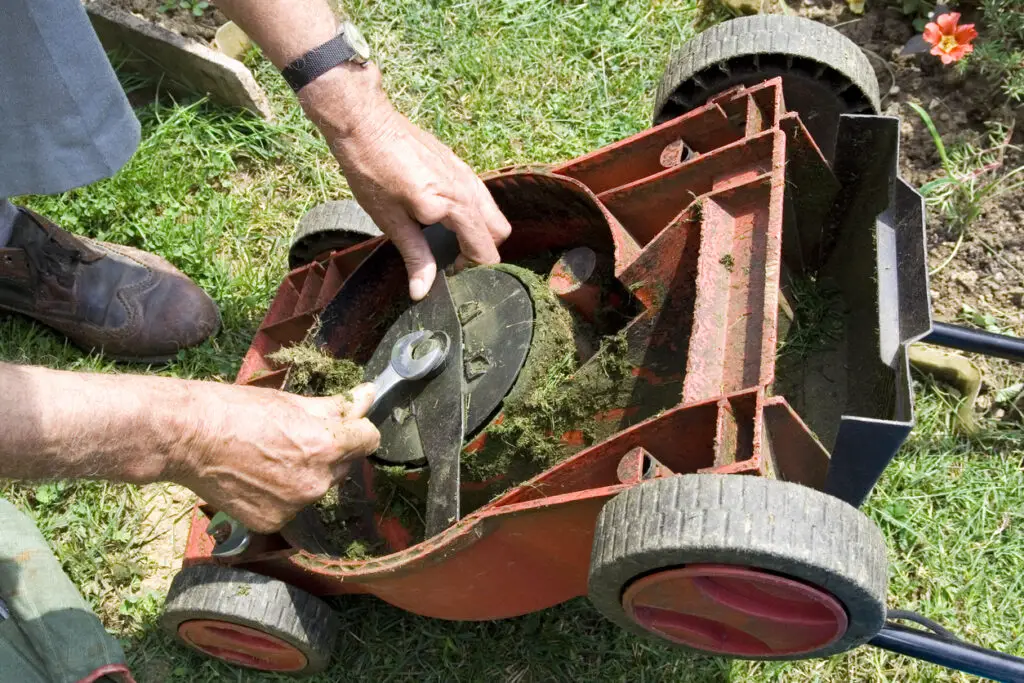1. Choose the Right Grass Type

Different grass types thrive in different climates. Warm-season grasses like Bermuda and Zoysia love heat, while cool-season grasses like Kentucky bluegrass and fescue do best in cooler regions. Picking the right grass type for your area ensures your lawn will stay lush all season long.
2. Test Your Soil First

Healthy grass starts with the right soil. Testing your soil’s pH and nutrient levels helps you understand what your lawn needs most. A well-balanced pH of around 6.5-7.0 encourages grass to thrive, so adjust with lime or sulfur if necessary for a greener, stronger lawn.
3. Mow at the Right Height

Keeping your grass a bit taller (usually around 2-3 inches) allows it to develop deeper roots, retain moisture, and outcompete weeds. Taller grass also shades the soil, reducing evaporation and keeping your lawn healthier during hot weather. Set your mower to the right height for your grass type for the best results.
4. Water Deeply, Not Frequently

Frequent, shallow watering can lead to shallow roots. Instead, water deeply about once or twice a week, aiming for 1-1.5 inches per session. Deep watering encourages roots to grow deeper, making your lawn more resilient and helping it stay lush, even in dry spells.
5. Fertilize Strategically

Grass needs nutrients to grow, so fertilizing is key. Apply a balanced fertilizer in early spring and late fall to give your lawn the boost it needs. However, avoid over-fertilizing, as it can burn the grass and encourage disease—less is more when it comes to fertilizer.
6. Aerate Once a Year

Aerating your lawn once a year relieves soil compaction and allows water, air, and nutrients to reach the roots. Core aeration, which involves removing small plugs of soil, is particularly effective. Early fall is an ideal time to aerate, as it helps the lawn recover and thrive.
7. Overseed for Thickness

Overseeding fills in bare spots and thickens your lawn, making it look lush and healthy. Apply grass seed to your lawn in the fall when temperatures are cooler and the grass has time to establish before winter. Overseeding yearly helps your lawn stay full and green.
8. Use Mulch for Clippings

Grass clippings are full of nitrogen, which is great for your lawn. Instead of bagging clippings, leave them on the lawn to act as a natural fertilizer. Mulching mowers break down clippings into fine pieces, allowing them to decompose quickly without creating a messy look.
9. Weed Control Is Key

Weeds compete with grass for nutrients, water, and sunlight. Address weeds early, either by hand-pulling or using a selective herbicide to target specific types. Maintaining a thick, healthy lawn naturally crowds out many weeds, keeping your grass greener and healthier.
10. Avoid Mowing Wet Grass

Mowing wet grass can lead to uneven cuts, clumps, and soil compaction. It can also spread fungal diseases. Wait until your lawn is dry to mow for a cleaner cut and healthier grass. It’s worth the patience for a cleaner, more professional look.
11. Rotate Mowing Patterns

Always mowing in the same direction can compact the soil and cause grass to lean in one direction. Changing up your mowing pattern each time you mow helps grass grow upright, reduces soil compaction, and leads to a more even, healthier lawn.
12. Watch Out for Lawn Pests

Lawn pests, such as grubs and chinch bugs, can wreak havoc on your grass. Keep an eye out for yellow patches or visible insects. Applying a targeted pest control treatment can help you tackle infestations and keep your lawn pest-free without harming beneficial insects.
13. Sharpen Mower Blades Regularly

Dull mower blades tear grass rather than cut it, leaving it vulnerable to disease and giving it a brownish appearance. Sharpen your mower blades at least once a season to ensure clean, precise cuts. A sharp blade improves the look and health of your grass.
14. Use Compost for Natural Nutrition

Top-dressing your lawn with compost adds beneficial microbes and organic matter to the soil. Spread a thin layer of compost in the spring or fall to improve soil quality, boost grass health, and give your lawn a beautiful, vibrant green color.
15. Embrace a Little Shade

If part of your lawn gets a lot of shade, consider planting shade-tolerant grass varieties or landscaping with shade-loving ground covers. This prevents you from fighting an uphill battle with sun-loving grass in low-light areas, helping your lawn look lush and full all around.
With these grass care secrets, you’ll be well on your way to having a lawn that stands out on your street for all the right reasons. Stick to these tips and enjoy a vibrant, lush lawn year-round.
